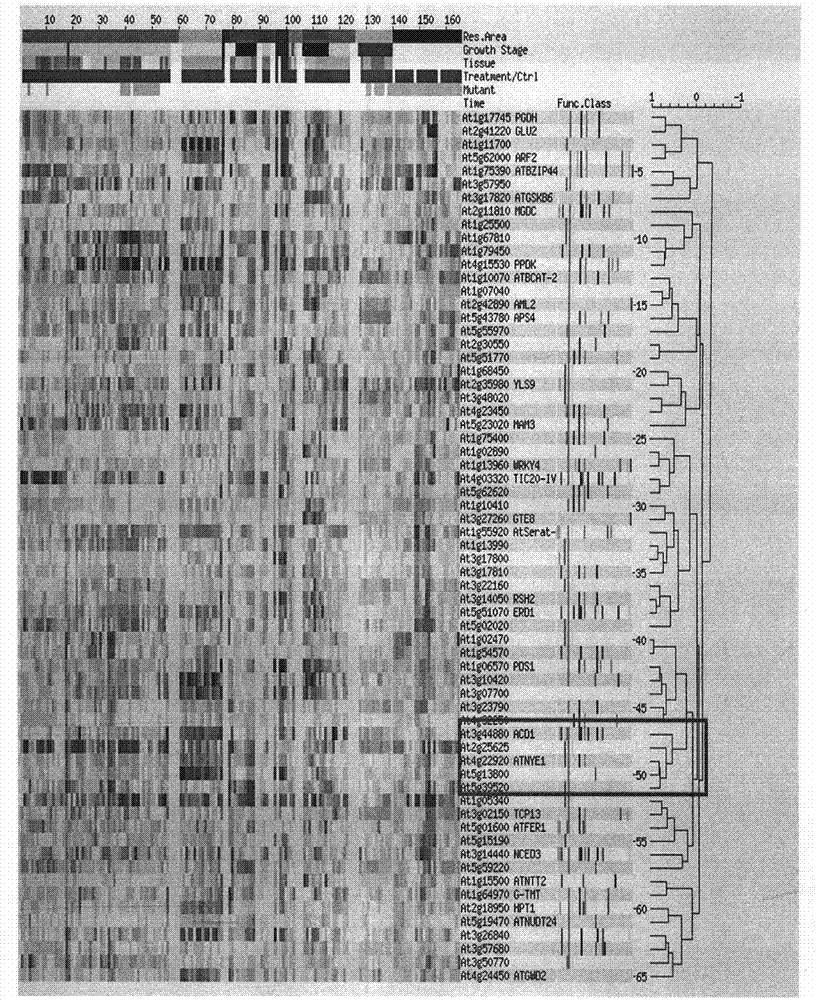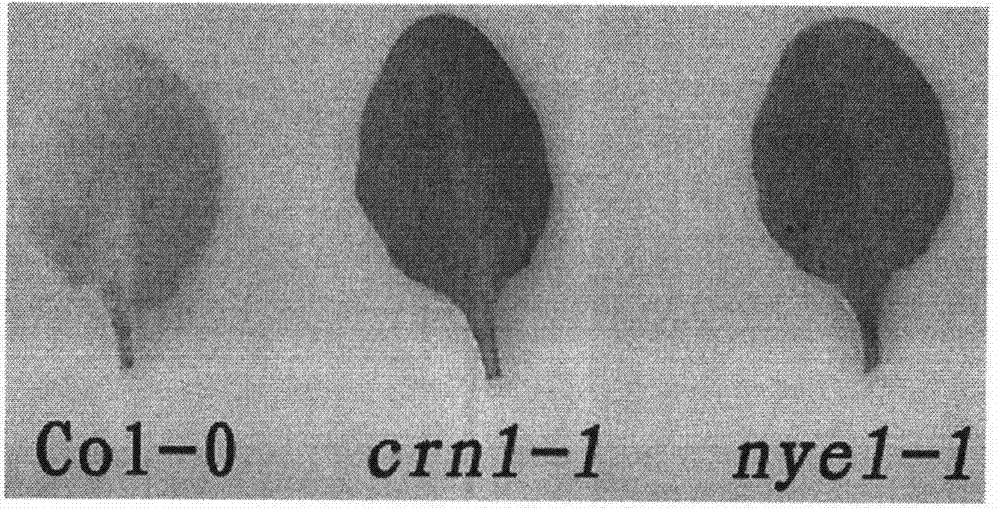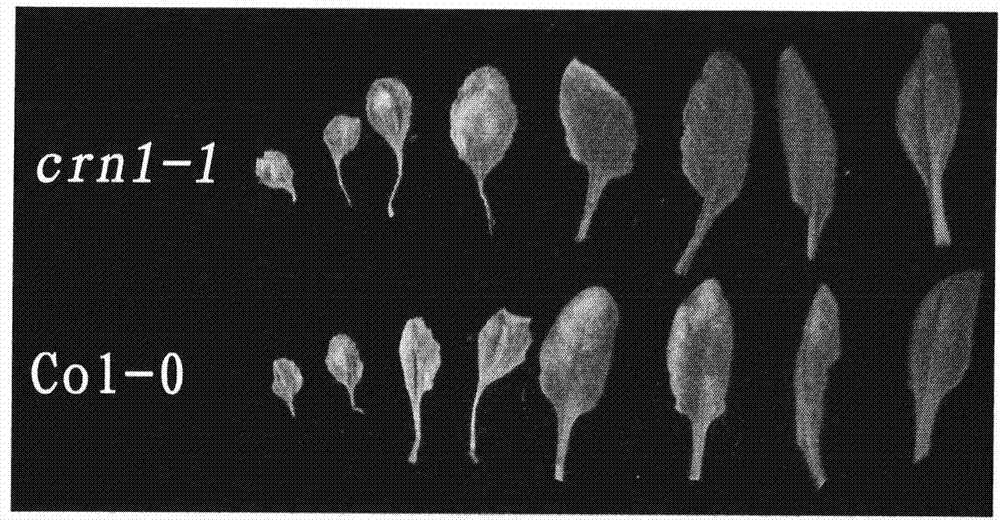Key gene for regulating and controlling chlorophyll degradation in the senescence process of plant and application thereof
A gene, chlorotic technology, applied to the key new gene CRN1 involved in the regulation of chlorophyll degradation and its application, molecular-assisted breeding for screening/identification of chlorophyll strains, and the creation of chlorophyll strains, which can solve the problem of accumulation of chlorophyll esters , pheophorbide activity deficiency, no detection of pheophorbide accumulation and other problems, to increase the content, prolong the life of the goods, improve the green period and landscape effect.
- Summary
- Abstract
- Description
- Claims
- Application Information
AI Technical Summary
Problems solved by technology
Method used
Image
Examples
Embodiment 1
[0049] Example 1: AtNYE1 co-expression gene screening
[0050] Buchanan-Wollaston et al. (Buchanan-Wollaston et al.Plant J.42, 567-585, 2005) compared the gene expression levels of Arabidopsis genome-wide under various aging conditions. We selected 827 genes in the literature results in The GO classification of genes expressed under various aging conditions showed that 67 of these genes encoded chloroplast-localized proteins, including chlorophyll degradation-related genes such as NYE1 and PaO. The expression angler program (Toufigh et al PlantJ.43, 153-163 2005) was used to analyze these 67 genes, and some genes with the expression profiles most similar to NYE1 were obtained (see attached figure 1 ).
Embodiment 2
[0051] Example 2: Analysis of T-DNA insertion mutants and identification of CRN1
[0052] From the Arabidopsis Biological Resource Center (ABRC www.arabidopsis.org / abrc / ) ordered the T-DNA insertion mutants of these genes, sowed them on the plate of 1 / 2MS+30mg / L Kan, removed the seedlings with resistance to the soil after 10 days, when the 6th rosette leaf of the plant was fully expanded , took the 3rd-4th leaf and carried out dark treatment, and found that one strain (mutant number SALK_000095) showed obvious stagnant green traits (see attached Figure 2-4 ). The results of PCR analysis of the genomic DNA showed that the T-DNA was inserted on the third exon at the position of At5g13800 of the target gene, and it was a homozygous insertion mutant (see attached Figure 5 ). Semi-quantitative PCR analysis showed that the full-length gene was not expressed in the SALK_000095 homozygous mutant (see attached Image 6 ), we named the gene CRN1 ( c o- r regulated with N YE1,...
Embodiment 3
[0092] Example 3: Phenotype analysis of insertion mutants and determination of chlorophyll content
[0093] When the sixth rosette leaf of the plant was fully unfolded, the 3rd to 4th leaves were taken for dark treatment; the leaves were placed in a petri dish with 2 layers of wet filter paper and treated for different days, then samples were taken to determine the total chlorophyll content. The results showed that the degradation rate of chlorophyll in crn1-1 was slower than that in nye1-1 (see attached Figure 7 ), showing that CRN1 has a greater application prospect in the creation of plant green strains.
[0094] Chlorophyll determination:
[0095] 0.1g of fresh leaves were ground with liquid nitrogen and extracted with 3ml of acetone. Stand under dark conditions to prevent chlorophyll from decomposing. After the chlorophyll is completely extracted and dissolved in acetone, measure the A645 and A663 values with a spectrophotometer, and calculate their contents by the ...
PUM
 Login to View More
Login to View More Abstract
Description
Claims
Application Information
 Login to View More
Login to View More - R&D
- Intellectual Property
- Life Sciences
- Materials
- Tech Scout
- Unparalleled Data Quality
- Higher Quality Content
- 60% Fewer Hallucinations
Browse by: Latest US Patents, China's latest patents, Technical Efficacy Thesaurus, Application Domain, Technology Topic, Popular Technical Reports.
© 2025 PatSnap. All rights reserved.Legal|Privacy policy|Modern Slavery Act Transparency Statement|Sitemap|About US| Contact US: help@patsnap.com



